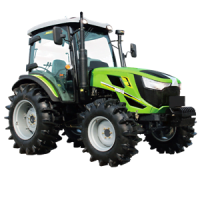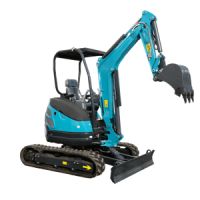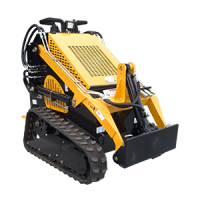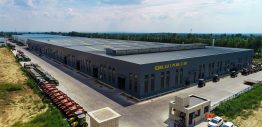Welcome to My Blog!
Before we dive into the content, I’d love for you to join me on my social media platforms where I share more insights, engage with the community, and post updates. Here’s how you can connect with me:
Facebook: https://www.facebook.com/profile.php?id=100072217509763
LinkedIn: https://www.linkedin.com/company/74949059/admin/dashboard/
YouTube:www.youtube.com/@tractormanufacturer-lc5qz,www.youtube.com/@excavatormanufacturers-sn9hk
TikTok: www.tiktok.com/@tractormanufacturer, www.tiktok.com/@excavatormanufacturers
Now, let’s get started on our journey together. I hope you find the content here insightful, engaging, and valuable.
Introduction
In the world of heavy construction equipment, excavators and bulldozers are two workhorses that stand out for their versatility and power. They play crucial roles in various construction and excavation projects, but they excel in different areas. The choice between an excavator backhoe and a bulldozer can significantly impact the efficiency and success of your project. In this in-depth comparison, we will explore the strengths and weaknesses of both machines, helping you make an informed decision when faced with the excavator backhoe vs. bulldozer dilemma.
Understanding Excavator Backhoes
Anatomy and Components
An excavator backhoe is a multifunctional machine consisting of several key components that work in tandem to deliver efficiency and power. The boom serves as the primary lifting arm, while the stick (dipper arm) connects the boom to the bucket, providing additional reach and digging depth. The bucket is the attachment used for digging, scooping, and lifting materials. The cab is where the operator controls the machine, offering visibility and ergonomic features for comfort during long hours of operation. Lastly, the hydraulic system powers the movement of these components, ensuring smooth, precise, and powerful actions. Together, these elements enable the excavator backhoe to handle a variety of demanding tasks with precision and reliability.
Functionality and Applications
Excavator backhoes excel in tasks that require precision digging, lifting, and material handling, making them indispensable on construction sites. They are commonly used for digging trenches, excavating foundations, and loading materials onto trucks, streamlining processes that require accuracy and speed. In addition to construction, excavator backhoes are also used for tasks like landscaping, road repair, and utility work. Their compact size compared to larger excavators allows them to work efficiently in confined spaces without sacrificing performance. This versatility ensures they remain a valuable asset across a wide range of job sites and industries.
Advantages and Limitations
Excavator backhoes offer exceptional precision and control, making them particularly ideal for tasks such as digging trenches, excavating around delicate structures, or operating in confined spaces. Their ability to perform multiple functions with a single machine, including digging, lifting, and loading, adds to their overall cost-efficiency and value. However, despite their versatility, excavator backhoes have limitations when it comes to heavy earthmoving projects or grading large, open areas, where full-sized excavators or dedicated loaders are often more effective. Understanding their advantages and limitations helps operators choose the right equipment for their specific project needs.
Getting to Know Bulldozers
Bulldozer Design and Components
Bulldozers are heavy, tracked machines designed for high-power earthmoving tasks, equipped with a large blade at the front that pushes, levels, and clears materials. The key components of a bulldozer include the cab, where the operator controls the machine with advanced features for safety, comfort, and visibility, the tracks that provide stability and traction over uneven or soft ground, and a powerful engine that generates the immense force needed for operation. The blade can be adjusted to different angles and positions, depending on the task, allowing the bulldozer to push materials with efficiency and precision. In some designs, bulldozers also include a ripper at the back, a claw-like tool used for breaking up hard soil or rock, further enhancing their versatility.
Bulldozer Uses and Specializations
Bulldozers are renowned for their earthmoving capabilities and play a crucial role in large-scale construction and land development projects. They are often used for tasks such as grading land, where they level uneven surfaces, pushing large volumes of soil to reshape landscapes, and clearing debris after demolitions or natural disasters. Specialized bulldozers, like crawler dozers, are designed specifically for rugged and uneven terrains, providing enhanced stability and traction in challenging environments such as mountains, forests, and mines. Additionally, wheel dozers, equipped with wheels instead of tracks, are better suited for tasks that require greater mobility and speed on firm, flat surfaces. This range of specializations ensures bulldozers remain highly adaptable machines across multiple industries.
Bulldozer Benefits and Drawbacks
Bulldozers excel in tasks requiring sheer power and the ability to move vast amounts of material quickly, making them indispensable for large-scale construction, road building, and mining operations. Their tracked design ensures excellent traction and stability on rough, soft, or muddy ground, allowing them to perform in environments where wheeled vehicles might struggle. Bulldozers are also highly durable and can operate continuously under harsh conditions, which makes them reliable assets for heavy-duty projects. However, they may lack the precision and versatility of excavator backhoes, as their primary function revolves around pushing and leveling rather than digging. Additionally, their large size and weight can make them less maneuverable in confined spaces or delicate job sites where finesse is required. Understanding these strengths and limitations helps operators deploy bulldozers where they perform best.
Comparing Performance
Excavator backhoes are unmatched in precision digging tasks, offering exceptional control and accuracy for jobs that require careful handling. They can efficiently dig narrow trenches, excavate around existing structures, and work in confined spaces without causing damage to surrounding areas. This makes them ideal for tasks like utility trenching, foundation excavation, and landscaping projects. Bulldozers, on the other hand, are capable of excavation but are far more suited for bulk earthmoving, such as digging out large open areas and removing layers of topsoil. Their sheer power and blade design allow them to push through dense materials quickly, but they lack the fine control needed for delicate excavation work.
Material Movement and Shaping
Bulldozers are exceptional at pushing and shaping materials over expansive areas, making them the go-to machines for creating level surfaces, clearing debris, or redistributing large volumes of soil, gravel, or rocks. Their wide, sturdy blade enables them to move materials efficiently with fewer passes, saving time on large-scale projects like road construction, site grading, and land clearing. Excavator backhoes, in contrast, excel at lifting and loading materials onto trucks or other transport vehicles, thanks to their articulated boom, stick, and bucket. They are particularly effective when working in tighter spaces or when handling precise material placement, such as stacking or unloading in smaller zones.
Precision and Versatility
Excavator backhoes offer far greater versatility compared to bulldozers, making them suitable for a wider range of tasks, from excavation and trenching to lifting and loading. Their articulated components and hydraulic systems provide precise control, allowing operators to perform delicate work like excavating near utility lines, trees, or buildings without causing damage. Additionally, backhoes can be equipped with various attachments, such as breakers or augers, to expand their functionality. Bulldozers, while less versatile, excel in tasks requiring raw power and durability. They are the ideal choice for heavy earthmoving, land clearing, and grading on large, open job sites. Their ability to withstand harsh conditions and move materials quickly gives them a unique advantage for large-scale projects where precision is secondary.
Operational Considerations
Operator Skills and Training
Both excavator backhoes and bulldozers require highly skilled operators to ensure safe, efficient, and productive operation. Training programs are essential, covering machine controls, safety protocols, and proper techniques for different tasks. Excavator backhoe operators must master the precise manipulation of the boom, stick, and bucket to perform delicate digging, trenching, and lifting tasks, often in confined or challenging spaces. Bulldozer operators, on the other hand, need to understand blade positioning, track steering, and terrain management to push, level, and shape materials effectively over large areas. Proper training not only increases productivity but also reduces the risk of accidents, machine damage, and project delays, making skilled operators a critical asset for any job site.
Maintenance and Costs
Maintenance costs can vary significantly between excavator backhoes and bulldozers, largely due to their design and operational demands. Excavator backhoes, with their intricate hydraulic systems, require regular inspections and maintenance of hoses, cylinders, and fluid levels to ensure smooth, precise movements. This complexity can lead to potentially higher maintenance costs over time, especially if issues with the hydraulics arise. Bulldozers, while mechanically simpler in design, require substantial maintenance of their tracks, which are subjected to constant wear, particularly on rugged terrain. Their powerful engines also require regular servicing to handle the demands of heavy earthmoving. Understanding these costs is essential for project planning, as both machines require consistent upkeep to avoid costly breakdowns and downtime.
Environmental Impact
The environmental impact of your project is another important consideration when choosing between excavator backhoes and bulldozers. Bulldozers, designed for large-scale earthmoving and clearing, can disturb vast areas of land, potentially leading to soil erosion, vegetation loss, and disruption of local ecosystems. Their broad blade and heavy tracks make them less suitable for environmentally sensitive projects where precision is key. Excavator backhoes, however, offer greater precision and control, allowing operators to perform targeted digging and material handling with minimal disturbance to the surrounding environment. This precision is particularly advantageous in projects near waterways, protected land, or delicate structures where limiting environmental impact is a priority. By selecting the right machine for the job, operators can balance efficiency with environmental responsibility.
Which Is Better for Your Project?
Project Type and Scope
When selecting between an excavator backhoe and a bulldozer, it’s essential to consider the specific requirements of your project. For tasks that involve precision digging, such as trenching for utilities or excavating near structures, an excavator backhoe provides the control and accuracy needed to work efficiently without damaging surrounding areas. They are also well-suited for material handling tasks, like loading debris onto trucks or relocating materials in confined spaces. On the other hand, bulldozers are ideal for projects requiring extensive earthmoving and grading, such as road construction, land clearing, and leveling large plots of land. Their ability to move vast amounts of material quickly makes them more efficient for large-scale operations where precision is less critical. Matching the machine to the project scope ensures optimal performance and cost-effectiveness.
Budget and Cost Efficiency
Your budget and project timeline are significant factors when choosing between an excavator backhoe and a bulldozer. Excavator backhoes, with their versatility and precision, may be more cost-effective for smaller-scale projects, such as landscaping, utility installation, or light construction, where their ability to perform multiple tasks reduces the need for additional equipment. For larger projects involving substantial earthmoving or grading, bulldozers can provide greater efficiency by handling heavy workloads at a faster pace. While bulldozers often have higher upfront and fuel costs, their capacity to move materials quickly can save time and labor expenses on extensive projects. Analyzing the scale and complexity of your project is crucial to determining the most economical choice.
Environmental and Regulatory Factors
Environmental considerations and regulatory requirements are critical when planning any construction or earthmoving project. Bulldozers, with their large-scale land-disturbing capabilities, may not be suitable for environmentally sensitive areas where excessive disruption to the land could violate local regulations or harm ecosystems. Excavator backhoes, on the other hand, offer greater precision and control, allowing operators to minimize their environmental footprint by targeting specific areas and reducing unnecessary soil displacement. Additionally, regulatory constraints, such as limits on noise, emissions, or proximity to protected zones, may favor the use of a backhoe. By carefully evaluating environmental impacts and adhering to regulations, you can ensure that your choice of equipment aligns with project requirements while maintaining compliance.
Conclusion
The choice between an excavator backhoe and a bulldozer ultimately depends on your project’s unique demands. Excavator backhoes offer precision and versatility, making them ideal for tasks like digging, material handling, and working near existing structures. On the other hand, bulldozers excel in heavy earthmoving and grading. By understanding the capabilities, advantages, and limitations of each machine, you can make an informed decision that maximizes efficiency and success on your construction or excavation project.
FAQ
Are excavator backhoes and bulldozers interchangeable?
While both machines are versatile, they have distinct strengths and are better suited to specific tasks. The choice depends on your project’s requirements.
Can bulldozers perform precision work?
Bulldozers are primarily designed for earthmoving and may lack the precision of excavator backhoes. However, skilled operators can achieve precision in grading and shaping tasks.
Which machine is more fuel-efficient?
Fuel efficiency varies depending on factors like machine size, engine type, and project conditions. Regular maintenance and efficient operation can help improve fuel economy for both machines.





-1.png)
